When the world shut down five years ago this month, the park was one of the few places in the city that stayed open. Sure, the playgrounds were closed, the museums shuttered, concerts and other events cancelled – including the extravaganza planned to celebrate the park’s 150th anniversary. But there were still 1,000-plus acres to run, walk, bike, play or hang out in. The park provided an antidote to cabin fever, the solace of green space, a place to quench our need as a social species to be around other people – albeit with masks and six-feet of distance.
Those early months of Covid drove home how incredibly important parks are to our chaotic urban lives; how much these slices of nature do for our jangled psyches, not to mention all their other health benefits.
There’d likely still be cars on JFK Drive , er, Promenade, were it not for Covid. The road was closed to traffic a few months into the pandemic; the new-found pleasure of a car-free pathway from the Panhandle to the Pacific helped build support for a goal that activists had been pursuing for decades. As one woman wrote the Chronicle, it provided “much-needed relief from all the daily stress under which [we’re] still living.” So much so, she suggested calling it “Sanity Road.”
Research studies and news stories have documented how people turned to parks during the pandemic. For a more personal perspective, I asked my daughter. At the time, she was a newly-minted college graduate who’d moved back home and hadn’t expected that would mean being cooped up with her parents. The park offered an escape hatch, where she could go for long walks, meet friends for runs or have socially distanced picnics. Over time, it became something more. “I don't know if I had the same appreciation, or like understanding of parks as a place to hang out, “ she recalls. “Now my preferred way to spend time with people is having Park Days. And that's not something that I feel like I did before Covid.”
I wish I could retrieve my own memories of the park from that time. When Covid hit I was deep in a writing project (a book that never came to fruition.) The pandemic added another element of angst to my days, but it didn’t really change my daily habits. Day in, day out, I was at my desk, banging my head against the wall trying to shake loose the story. (Of course, the fact I was able to be so self-absorbed was a matter of luck; neither I nor anyone close to me ever got really sick with the virus.)
I know I spent time in the park; photos I found on my phone attest to walks or bike rides. But I think I was mostly sleep-walking or sleep-riding. My body was in the park, but my mind was back in my office. A few things did pull me back in place: I was fascinated by the stark geometry of the Sky Wheel and loved the chalk drawings left by kids all over park roads.
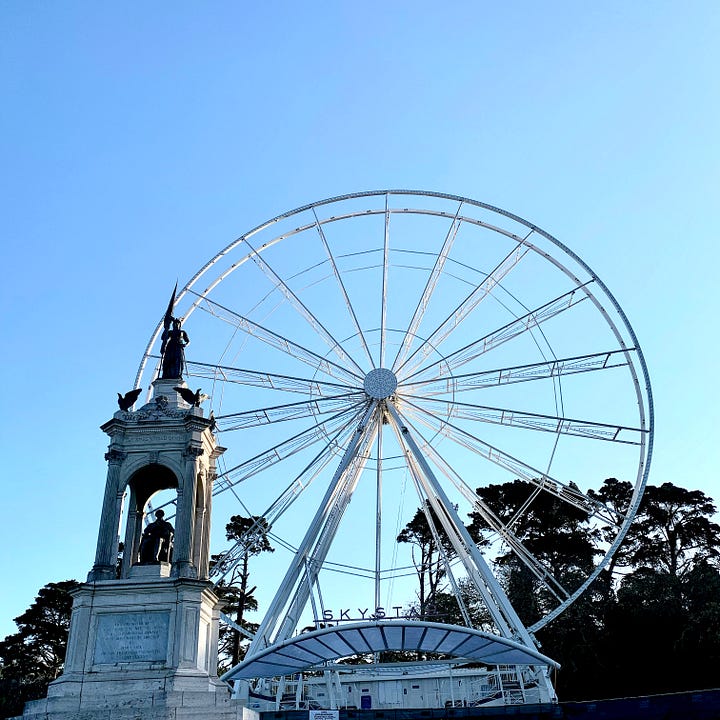
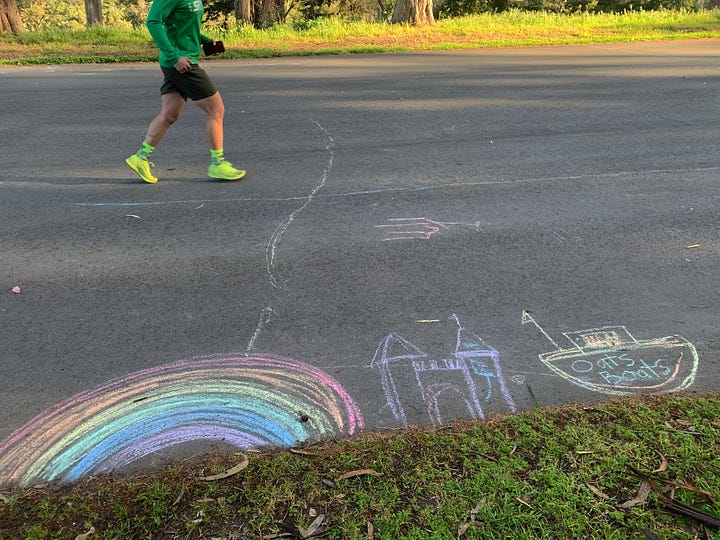
But honestly, most of the time I was lost in rumination. I wasn’t paying attention.
These days I am — or at least, I’m trying. That’s one of the goals of these posts, to practice what Rob Walker calls “the art of noticing” in his excellent Substack. I’m making a conscious effort to be alert, to keep all my senses fresh and open. There’s so much to drink in, so much to remind me the park is an ever abundant wellspring of wonder and delight. Here are just a few:
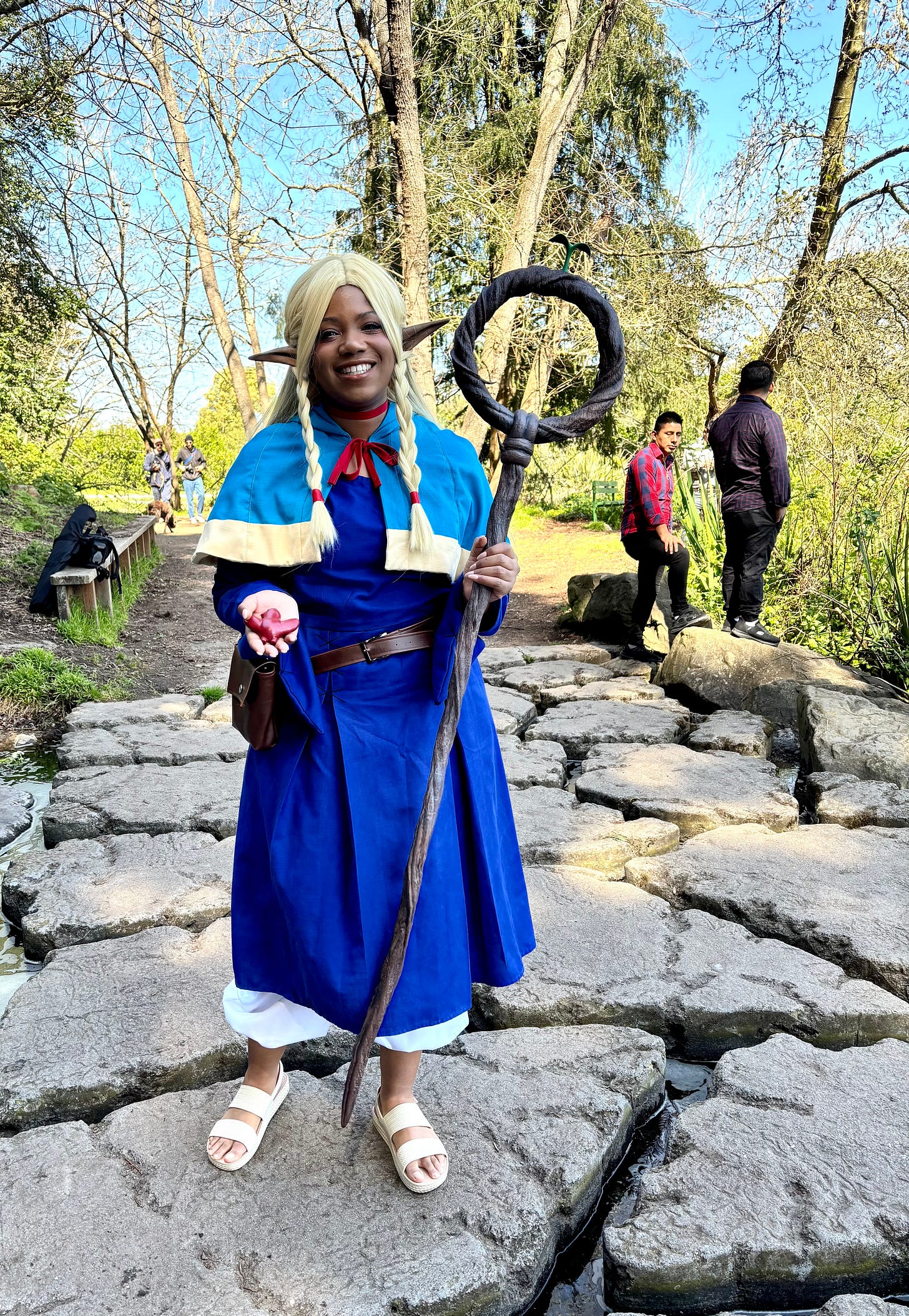
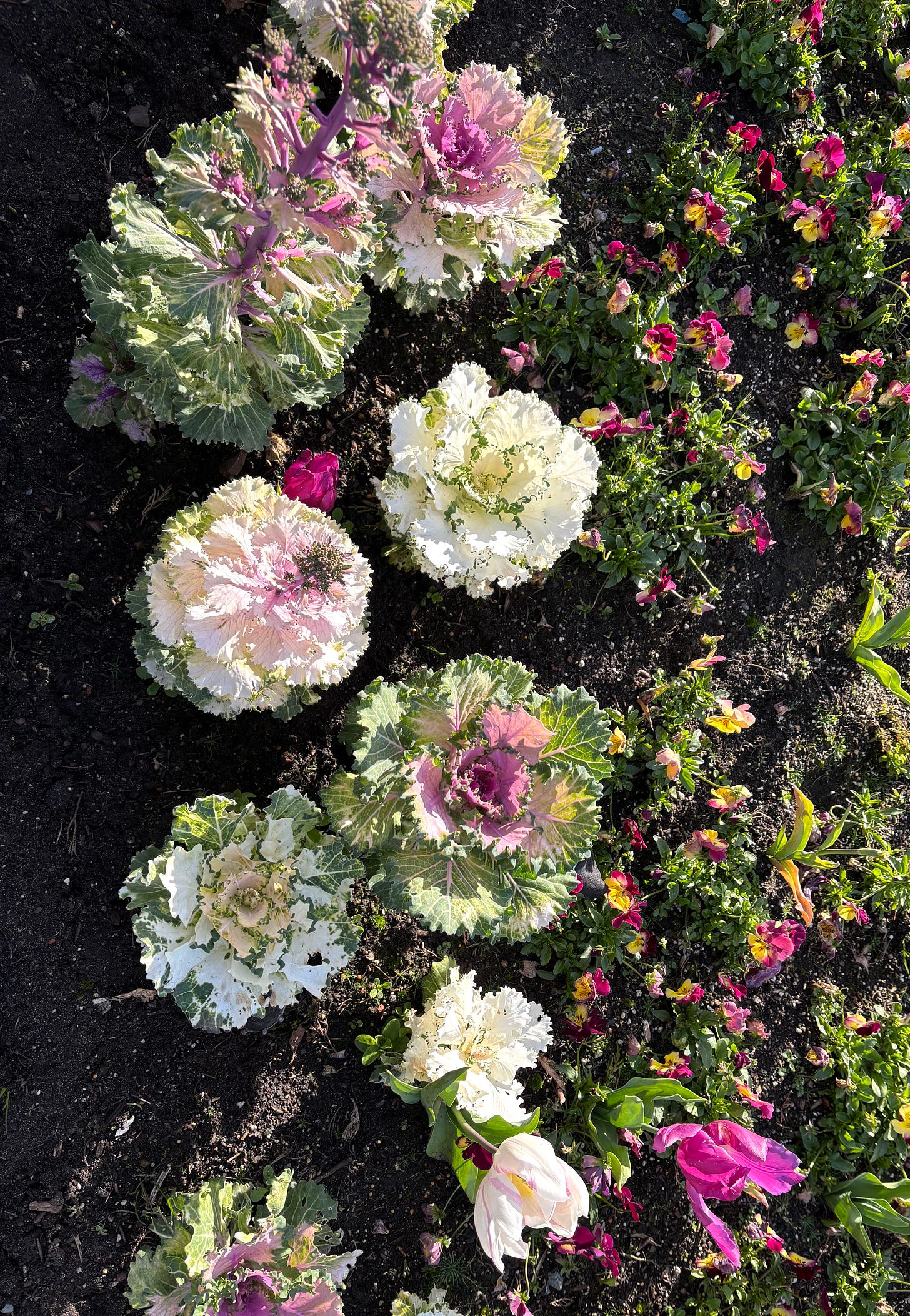
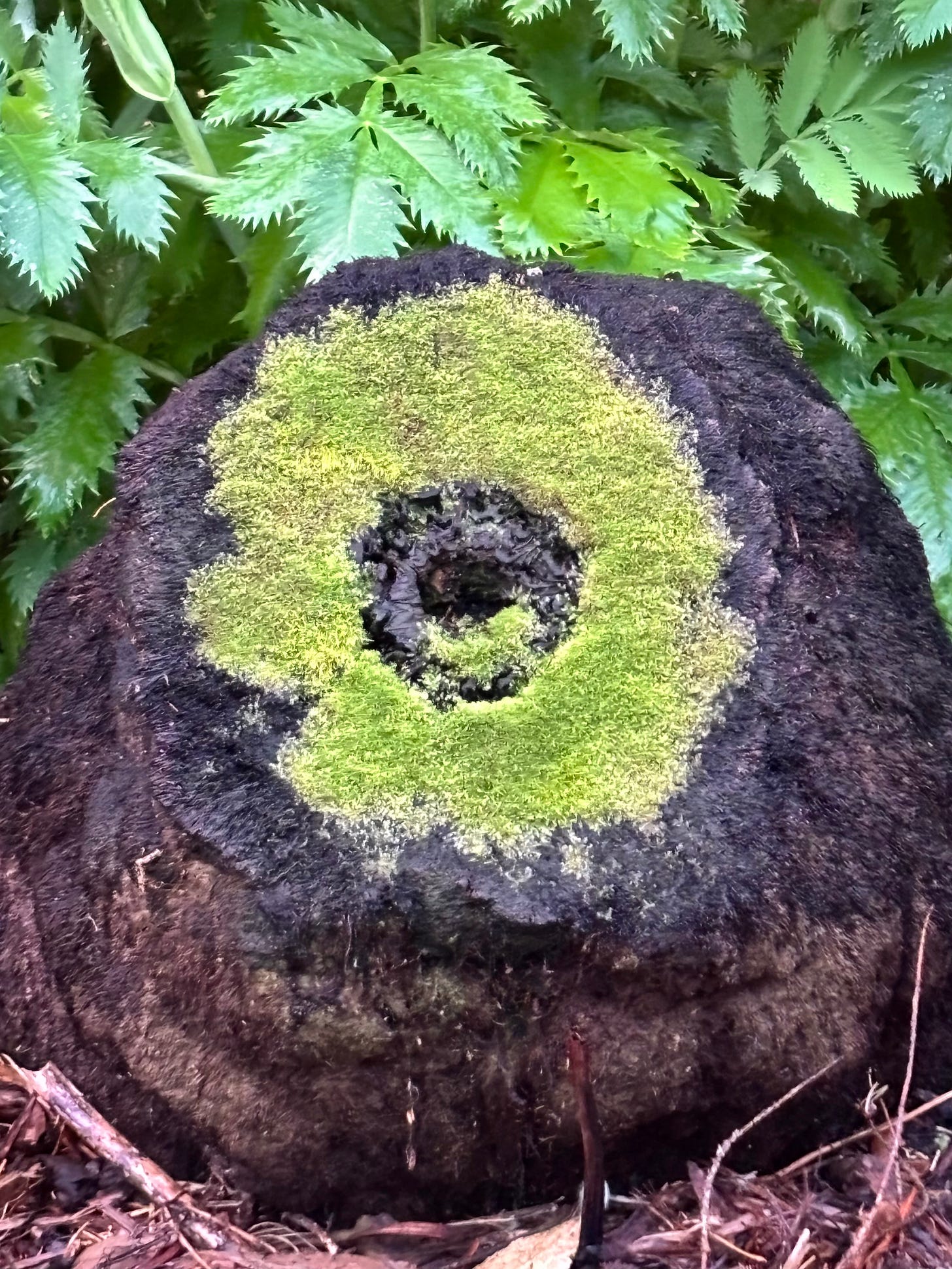
I came across this astonishing improvised bit of artwork in the AIDS Grove: two sticks, finely balanced and slowly turning with the wind like a Calder mobile:
***
Speaking of park wonders — it’s nesting time again for the Great Blue Herons of Blue Heron Lake. Nancy DeStefanis of San Francisco Nature Education reports there are four nests on the island across the from the boathouse and one on the island facing the waterfall. She and her volunteers will running the Heron Watch at the lake from 10-to-1 on April 12, 19, 26 and May 3, 10 and 17. It’s a great way to see and learn all about these gorgeous birds. For more information, visit San Francisco Nature Education.

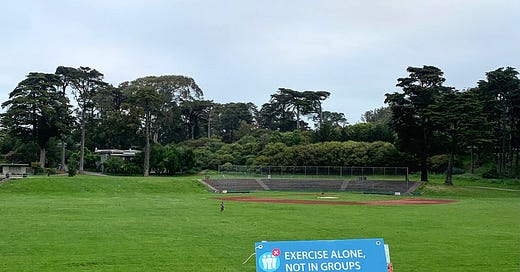



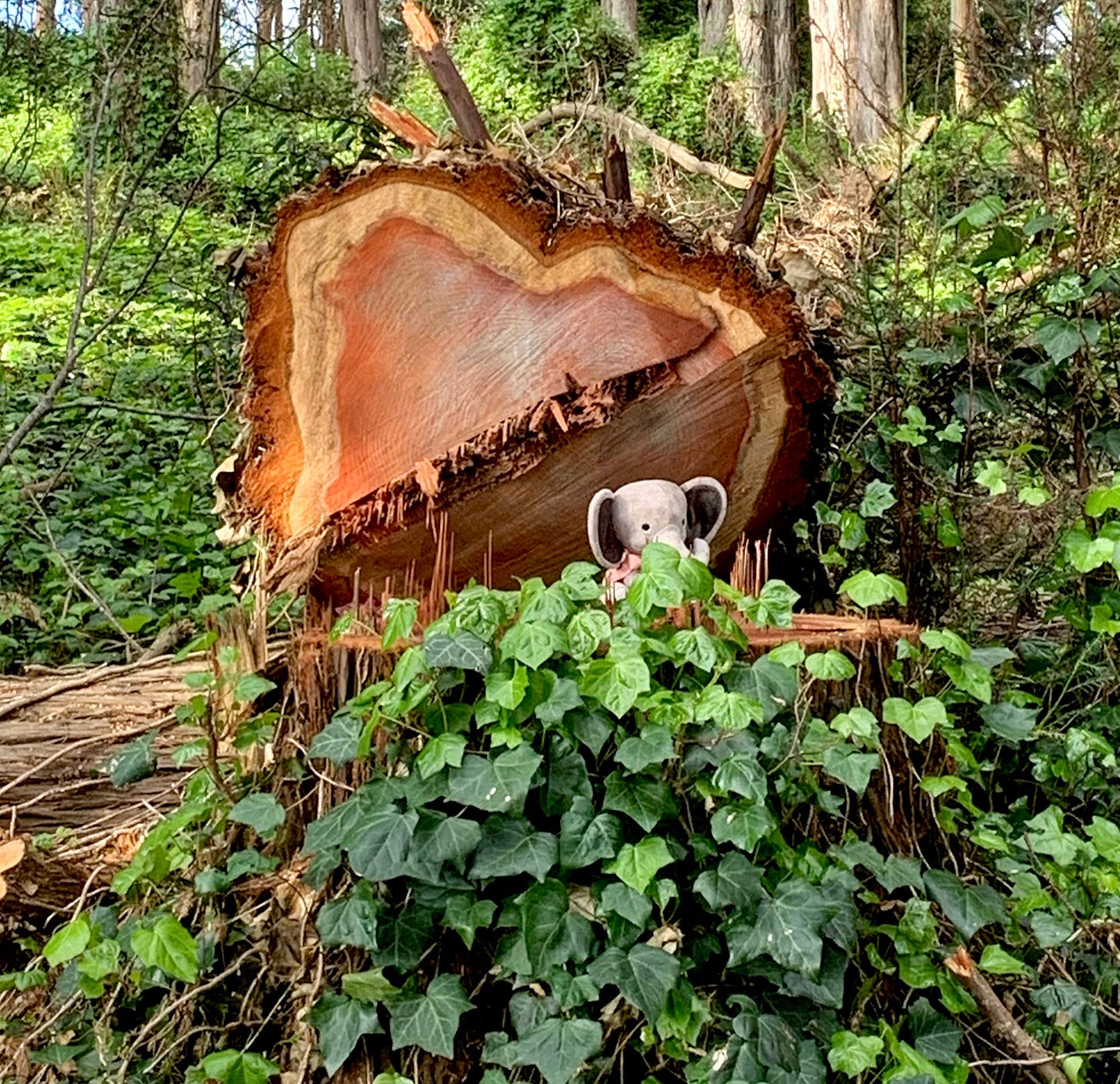
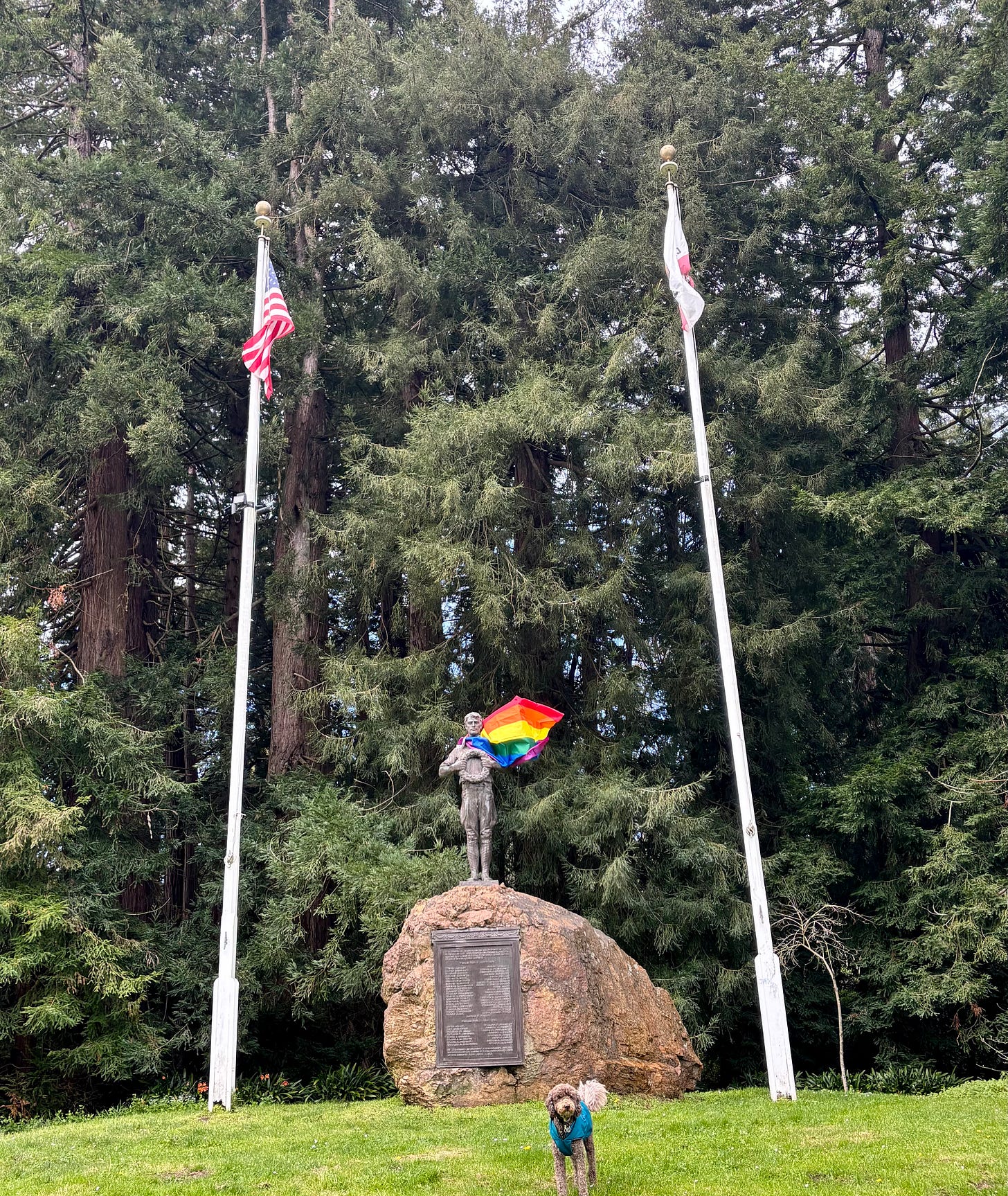
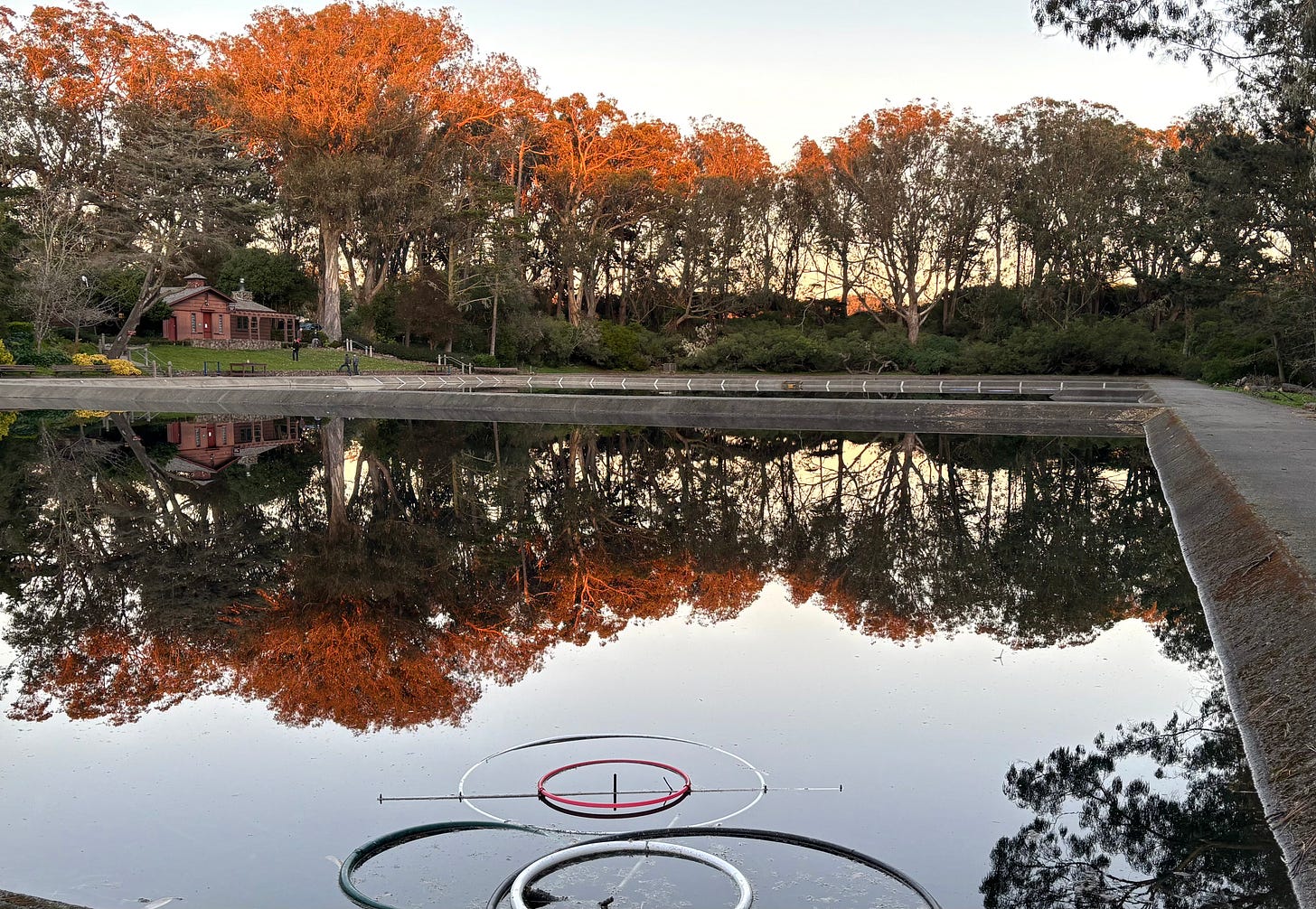
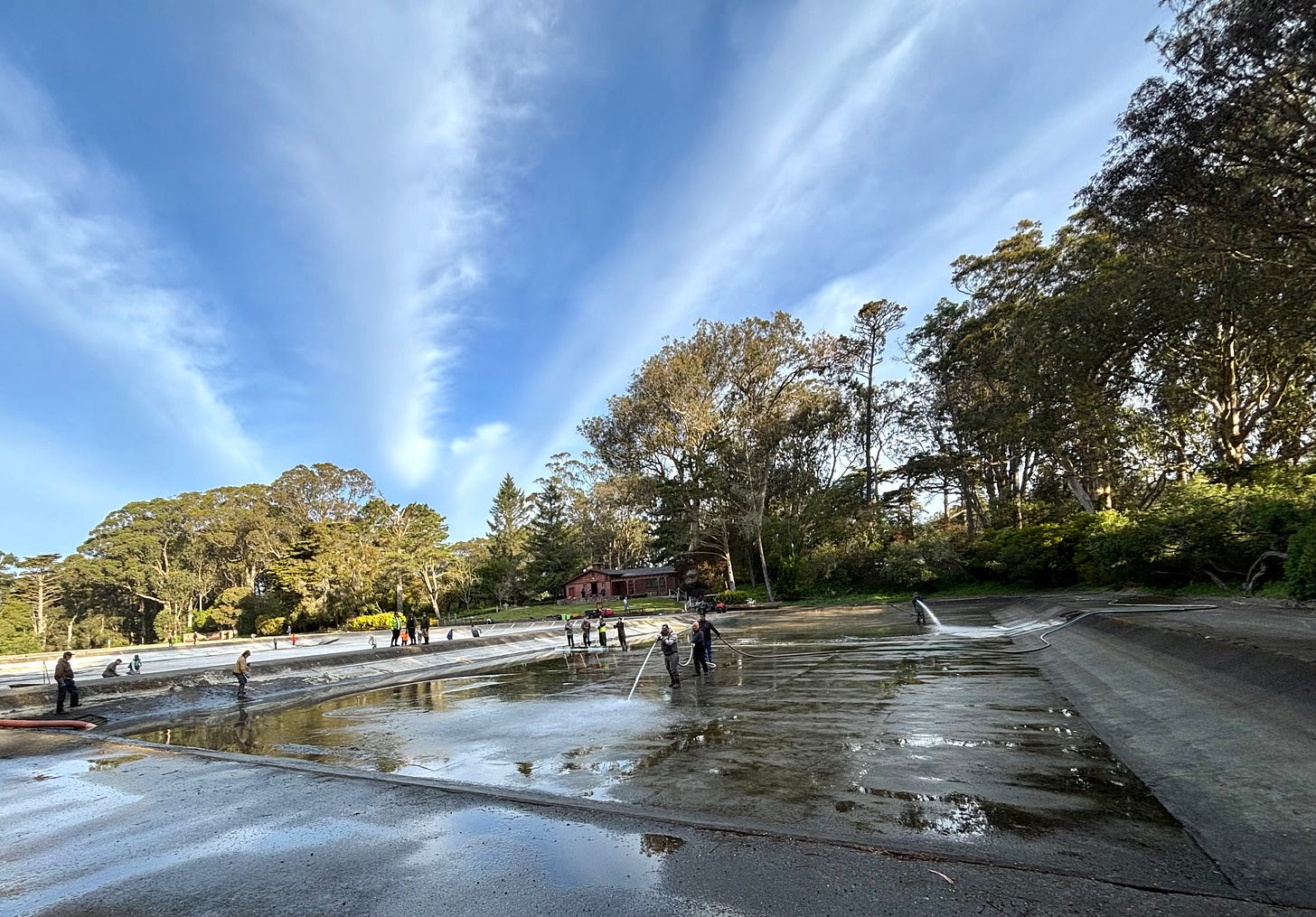

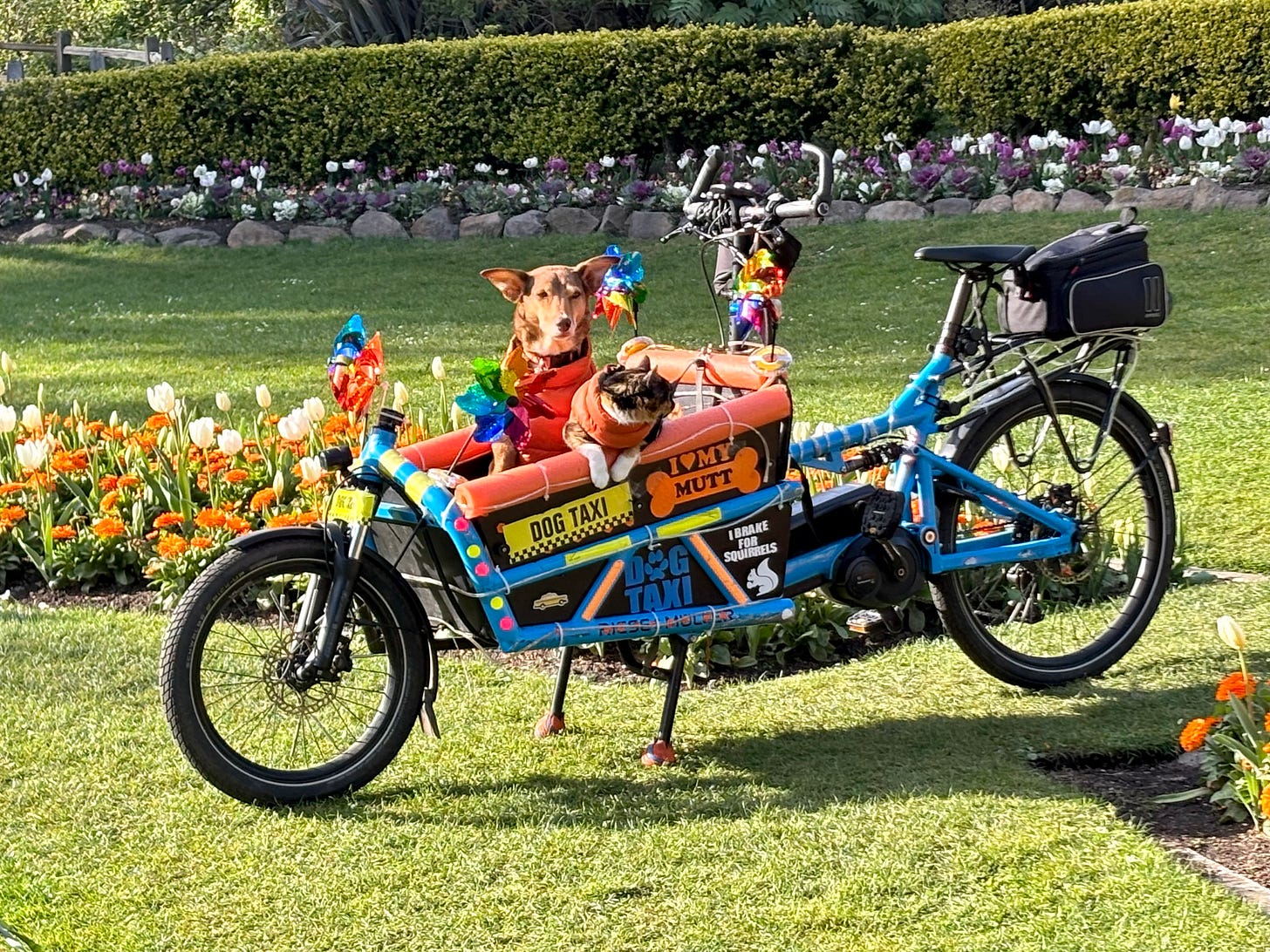
Really nice essay! (Fun to hear from M!) I had to authenticate in order to comment, just fyi